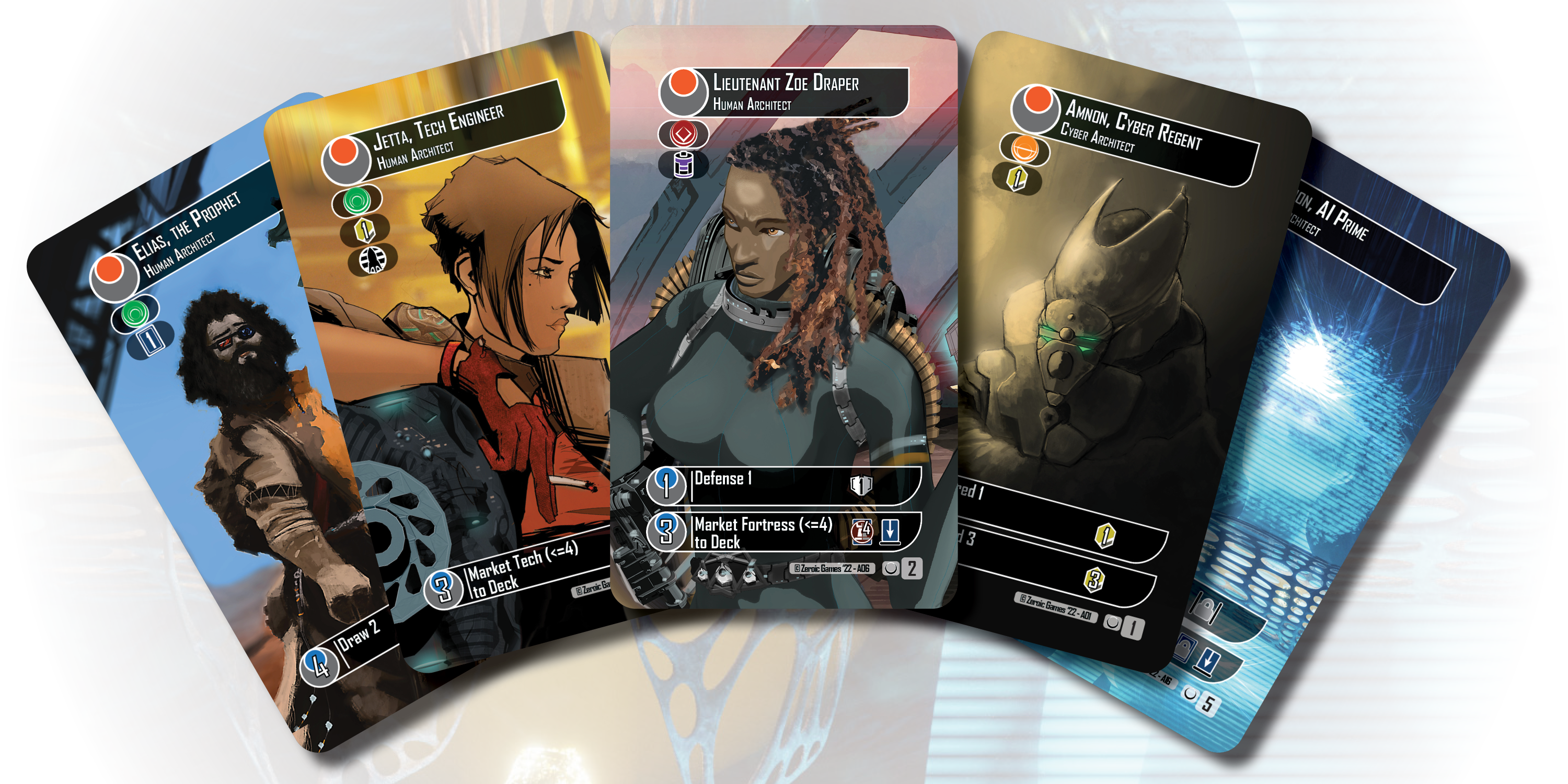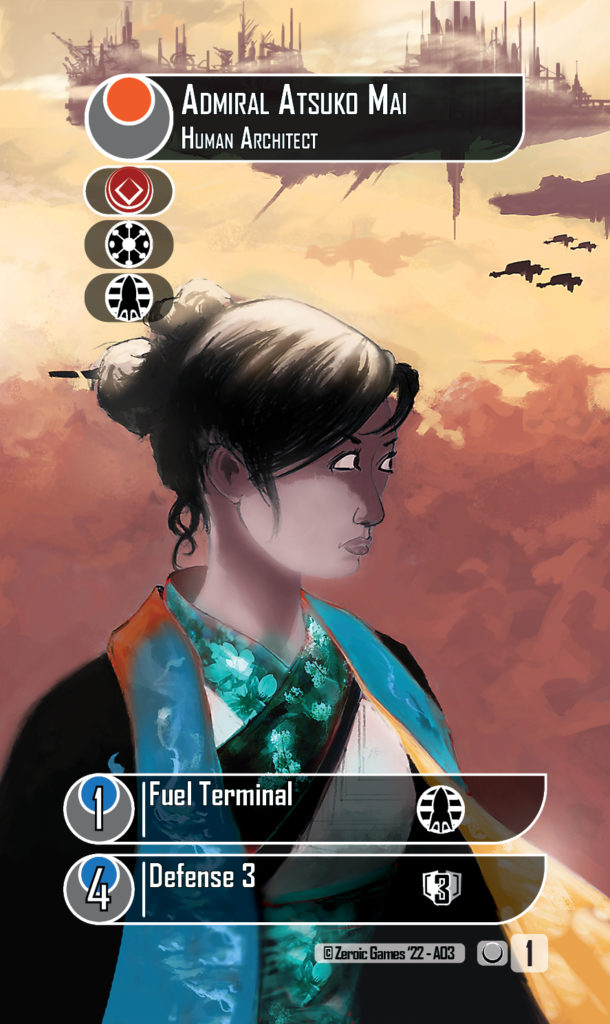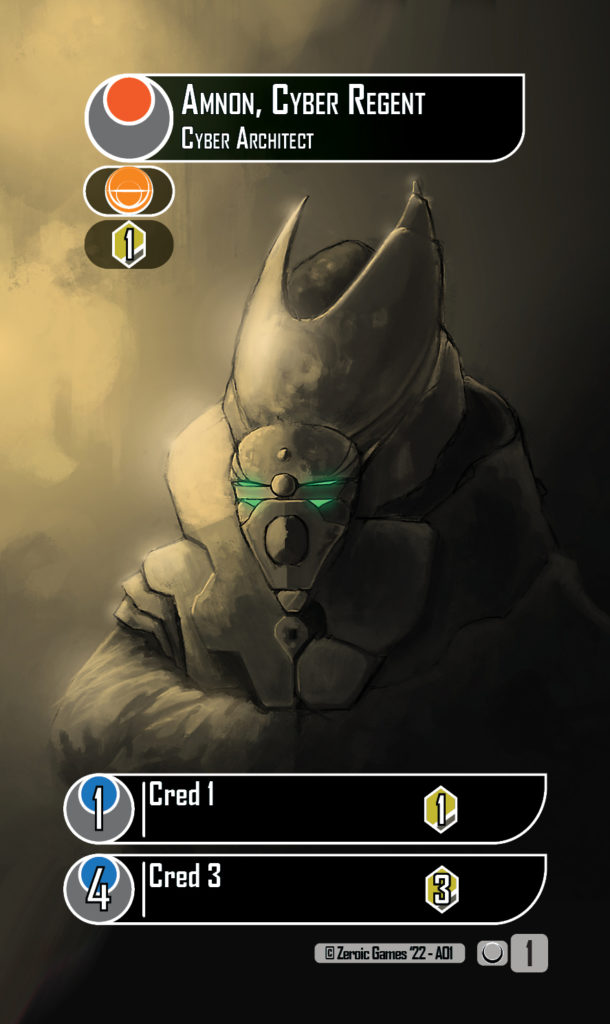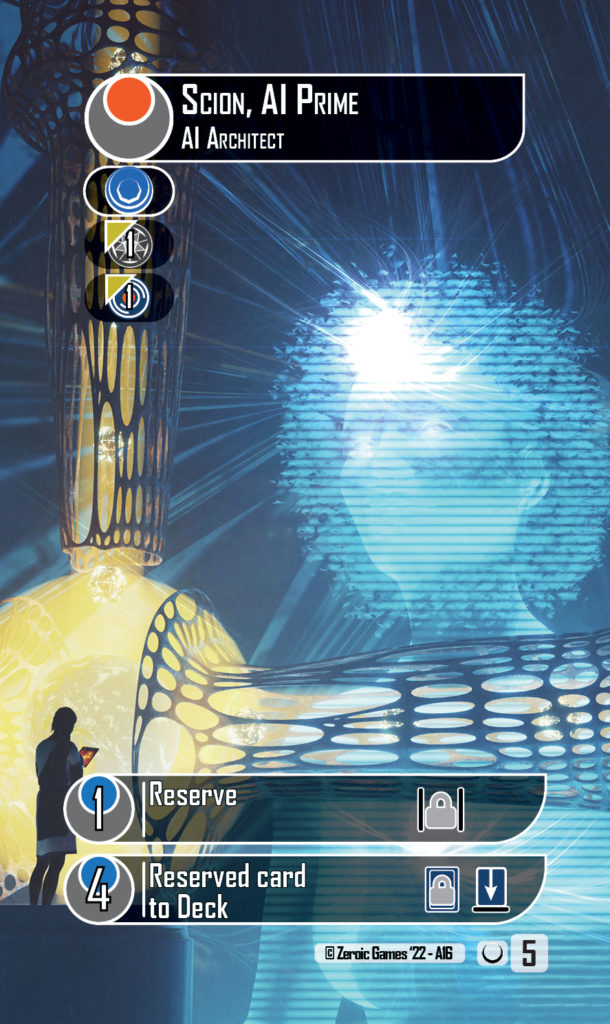Part 2 of ?
Welcome back! In his part of the design diary, I’m planning to deep dive into game mechanics of Helionox: Chronicles. I started this a long while back and you can see it here if you’d like to get more of an overview of what’s in the game:
Design Diary 003 – Game Mechanics in Helionox
What I’d like to do over the next few entries here is talk about specific card designs and mechanics choices. So a good place to start is with the Architects. Anyone who played The Last Sunset or Deluxe Edition is familiar with the concept of Architects. I always liked how these worked and there are mechanical similarities to the Architects of past Helionox games. However, balance-wise, Chronicles makes Architects a focal point of the game in several new and interesting ways. First let’s talk about how they work then we’ll dive into some strategy tips.
Starting Locations and Builds
First, I decided to go full tarot sized card for every Architect in the game. This really makes them pop off of the table top and showcases the art work like never before. In the upper left corner of each Architect card you see the orange and gray Architect icon. Just below that is a Location icon. The Location icon is the starting world for each Architect. Some locations, like Mercury, which is Amnon’s starting location, may not be used in every episode of the campaign. If you choose an Architect whose starting location is not in the game, you get pick any starting location. This adds quite a bit of variety to the beginning of the game. Below the Location icon is all of the start of game information you will need for set up. Each Architect has a unique starting build. Some start with buildings, some with resources or other securities, and some even draw cards at the beginning of the game. Asymmetry and in game customizability add massive replay value to any game which is why I’ve focused on this a major part of Chronicles.
Cryo Abilities
During the game itself, each Architect has access to one or two “Cryo abilities” shown at the bottom of each card. Each ability can be activated by adding Cryo counters to your Architect. A single Cryo counter is removed from each Architect every round and no Cryo may be added to an Architect that is already in Cryo. This means that the more powerful abilities will put your Architect into Cryo for longer periods of time. Strategy tip: Many Architects have a Cryo 1 ability that allows you to plan ahead just a bit. A Cryo 1 ability means you can use your Architect 2 turns in a row! And, of course, there are cards in the game that allow you to “Thaw Cryo” . This lets you use your Architect more times throughout the game which is extremely powerful as the game plays out over a very limited number of rounds.
Campaign Mode
One of the most exciting parts of Helionox: Chronicles is the Campaign mode. The campaign acts as a training module, starting in Episode 1 with a limited number of options and only the most basic cards available. As you progress through the campaign, you will gain access to more and more components. These “unlocked” components come in a variety of types including cards available in the Market and new Architects. In the lower right corner of each Architect card you will notice a small number. This number shows the campaign episode in which the Architect first becomes playable. The core game will include 5 episodes and (spoiler alert!) I’ve revealed one of the Architects from episode 5 above. I’ll do my best not to reveal everything from the campaign before the game is even available but that won’t be easy!
Eternal Mode
Another thing I’m particularly excited about is that each opponent you face in the Campaign mode will also have an “Eternal play” mode in addition to its campaign scenario. Eternal play will allow you to take all of the goodies you “unlock” during the campaign and use them in an endlessly variable game play system. In the next design diary entry, I’ll go over some of the opponents you will be facing in the campaign / eternal modes and deep dive into this exciting part of Chronicles! So what do you think of the Architects shown above? Are there any you are particularly excited to try out? I love games that add replay value with game start asymmetry and in game customizing. What are some of your favorite games with these types of mechanics?







